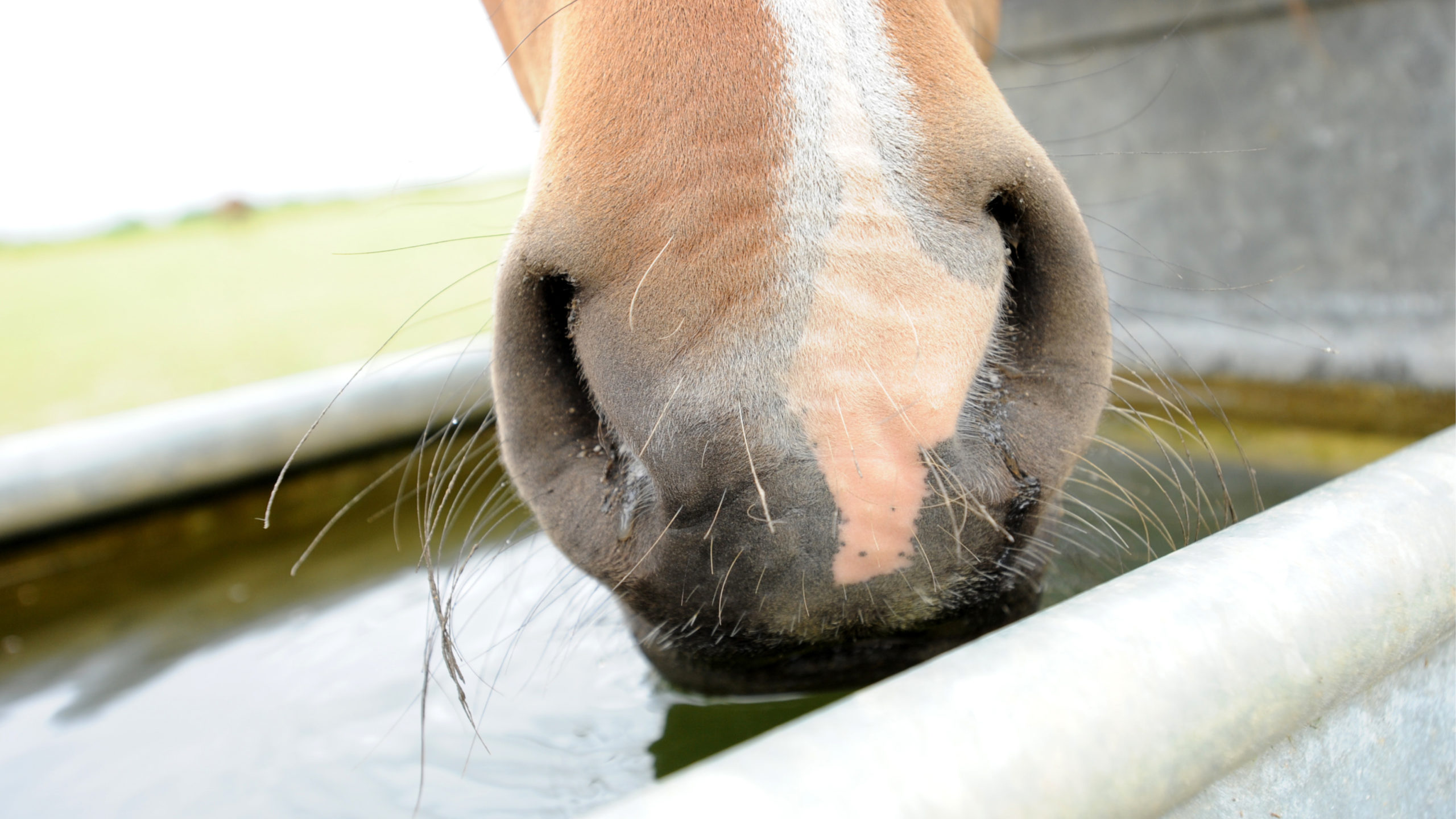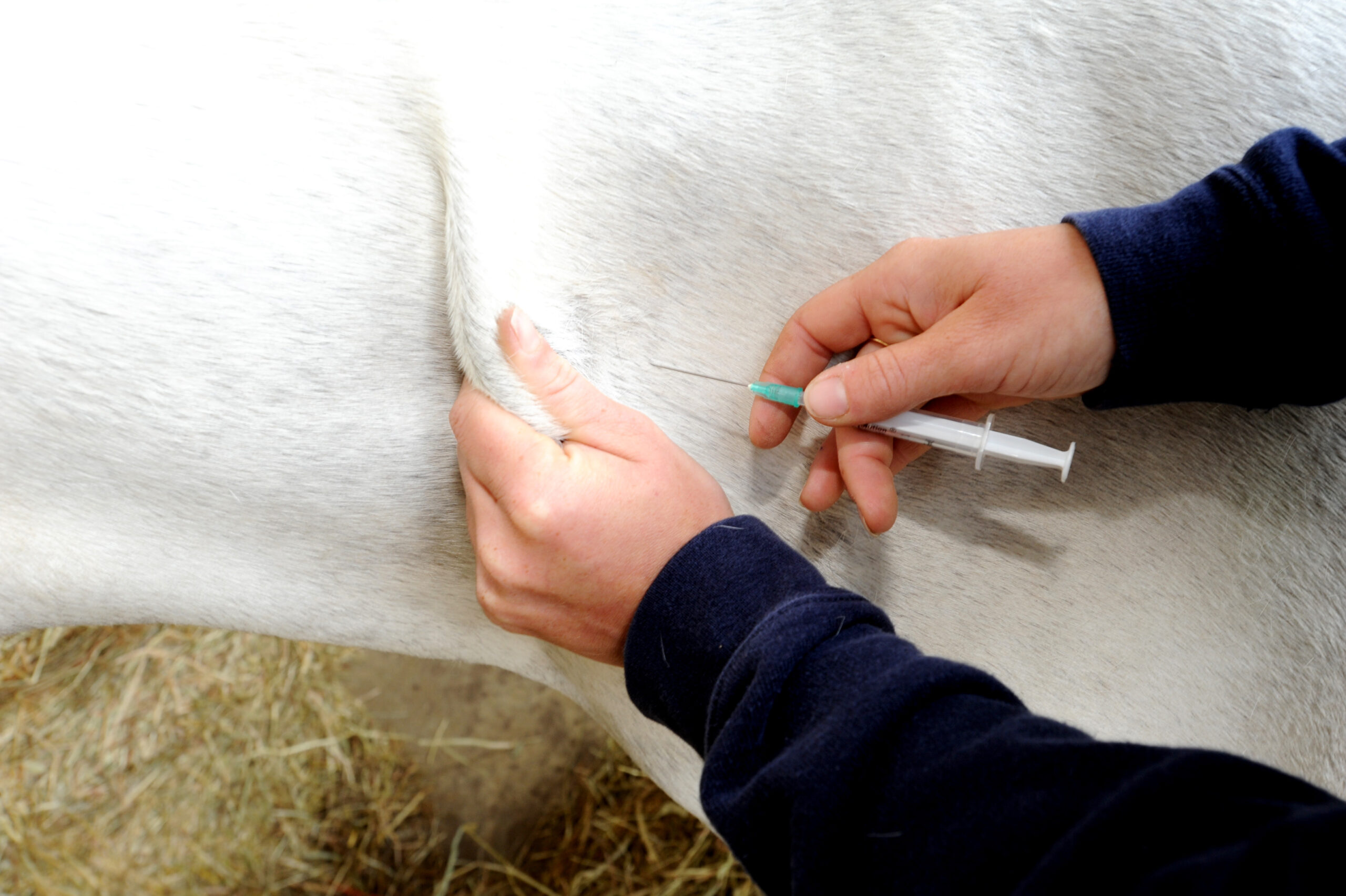Equine Influenza, also known as Equine Flu, is a highly contagious viral infection that affects horses around the world causing both upper and lower respiratory disease. The Equine Flu virus is similar but not the same as the virus that causes Flu in humans, therefore, it cannot be spread between humans and horses.
How is it spread?
Equine Influenza spreads very easily amongst populations of horses via inhalation of the virus particles, which can travel in the air over large distances. As these particles are airborne, they can be picked up by the horse in the environment and through contaminated clothing and equipment after an infected horse has coughed in the area. In an equine population of unvaccinated horses, they are highly susceptible to infection and although it’s possible for a vaccinated horse to contract the infection, by protecting an equine with the Equine Influenza vaccine, it will reduce the likelihood of infection substantially.
Clinical signs
Clinical signs of influenza often present themselves 1-3 days after the equine has been exposed to the virus – known as the incubation period. An infected horse will often seem depressed, lethargic, show poor performance and develop a harsh, dry cough. Other symptoms include a nasal discharge, lack of appetite and high temperature/fever which can exceed 38.5°C. In vaccinated equines, clinical signs may not be present or may be significantly reduced, however, these animals are still capable of spreading the disease, but will shed the virus at a lower rate when compared to non-vaccinated cases. It is recommended to contact your vet immediately after spotting any of these symptoms to gain an accurate diagnosis, implement a treatment plan and isolation measures to prevent further spread of the disease.
Diagnosis
Diagnosis can be confirmed by laboratory analysis of nasopharyngeal swabs and blood samples. Symptoms usually clear within 7-10 days, but full recovery can take much longer. It is often recommended that a horse should be rested for one week for each day they suffered with a fever.
Biosecurity
As Equine Flu is so contagious it can have a devastating impact on large livery and competition yards. Any new arrivals or horses showing any clinical signs should be isolated immediately and strict biosecurity measures should be implemented to prevent the spread of disease – such as using separate tools and equipment, using overalls or changing clothes, foot dips and regular disinfectant use in the area.
Treatment & prevention
Although there are no specific treatments for Equine Influenza, anti-inflammatory drugs are often prescribed to bring the fever under control and antibiotics used when pneumonia is present. Therefore, prevention is better than cure and it’s recommended to isolate any new arrivals to the yard for a minimum of three weeks following Equine Influenza biosecurity practices to ensure the individuals are not carrying the virus. In addition, vaccines are available to offer immunity against the pathogen. At Bransby Horses, we vaccinate every new intake upon arrival within their quarantine period at our Animal Reception Centre. As a general rule, a primary vaccination course should include two vaccinations 4-6 weeks apart, followed by a third 5 months after the first and then annual boosters.
Handy hints to reduce the risk of infection
- Ensure equines are up-to-date with their vaccinations
- Washing hands between touching individuals/herd groups
- Regularly disinfect buckets and tools
- Don’t be afraid to ask visitors or professionals to change and/or disinfect clothing
- Reduce unnecessary movements on and off the yard
- Isolate new arrivals and those returning from competition/other yards for at least three weeks in separate housing, ideally 25m from other horses
- Use disinfectant, hand wash and foot dip facilities upon entrance/exits
- Use separate tools and equipment
- Use protective clothing, gloves and separate footwear
- Tape off the area and install clear signage
We’d encourage everyone to be vigilant and monitor their equines closely for any clinical signs, adhere to strict biosecurity measures and ensure their equine is vaccinated against Equine Influenza to reduce their risk of infection and the subsequent spread of disease. Contact your local vet if you have any concerns or questions.
Click here for a downloadable version of this information on Equine Influenza.
Special thanks to the Animal Health Trust for their assistance in the writing and preparation of this resource.
Remember we are here at Bransby Horses to support you with the health and welfare of your horse, if you require further information on any of the above or you would like to discuss your management plan please call 01427 787369 or email welfare@bransbyhorses.co.uk.


